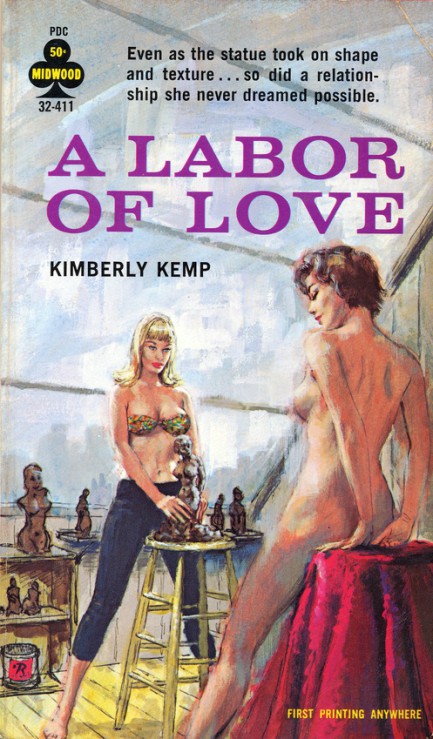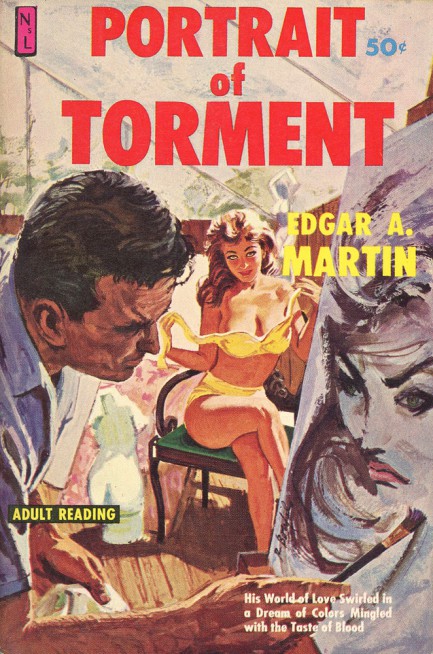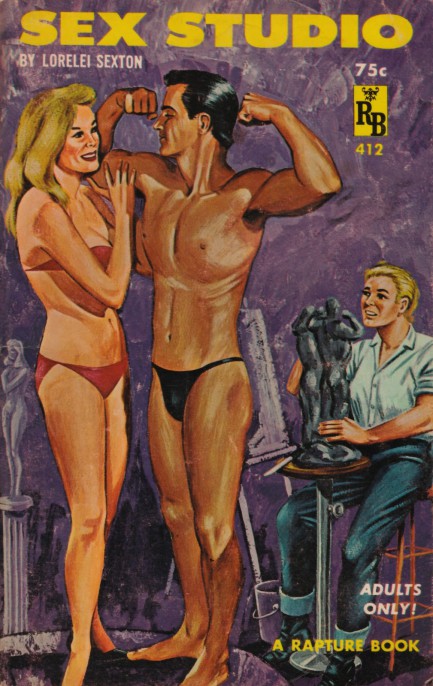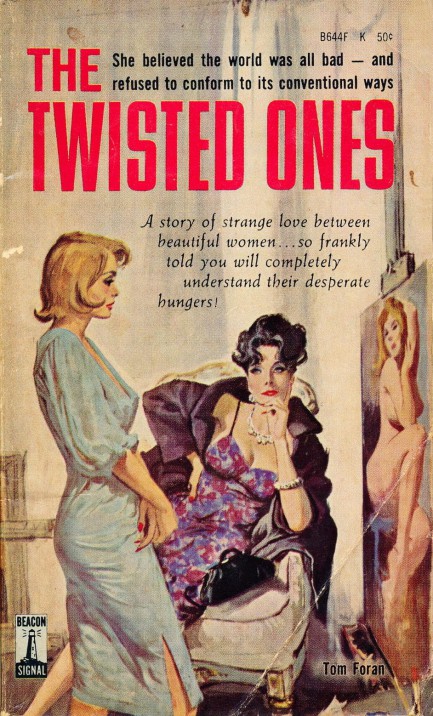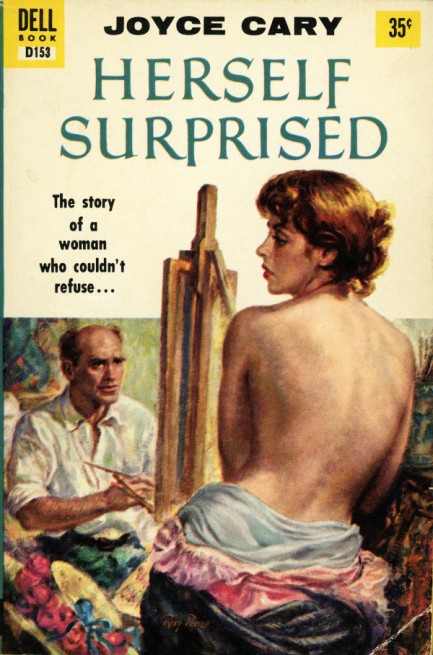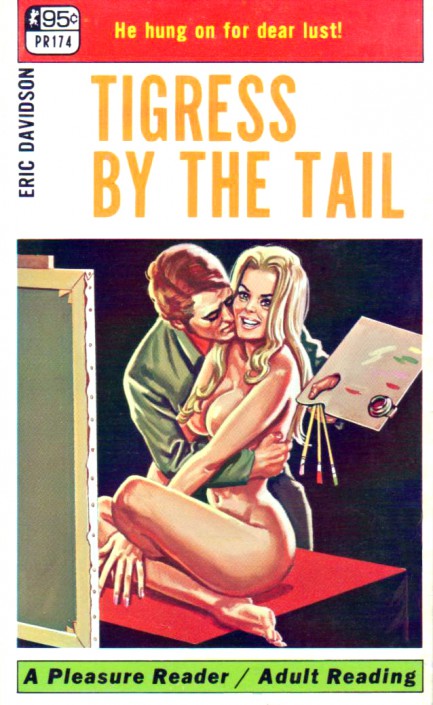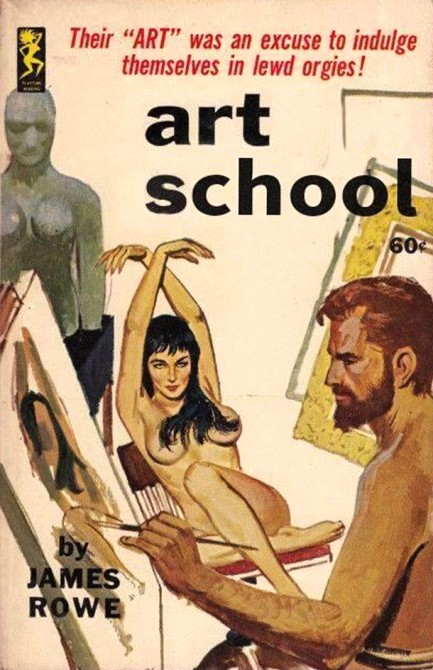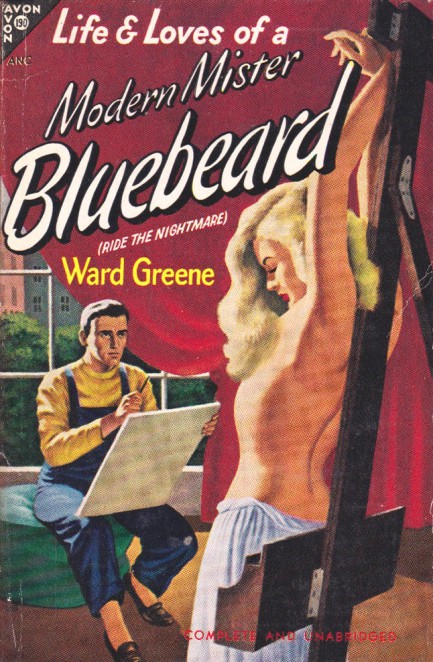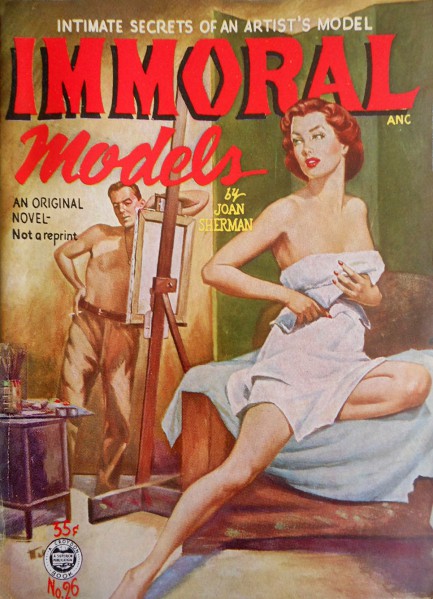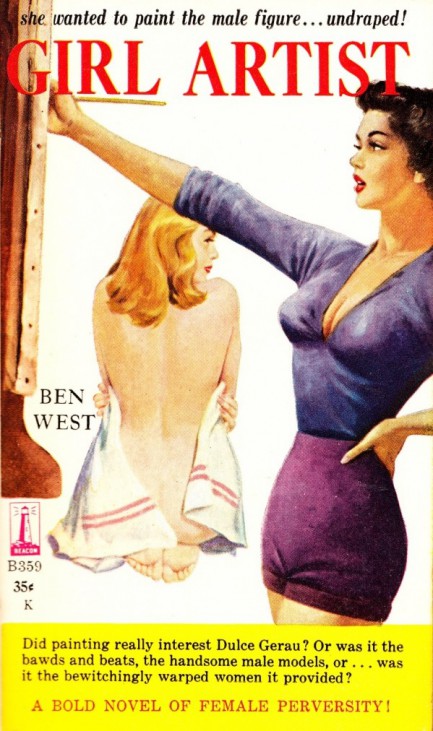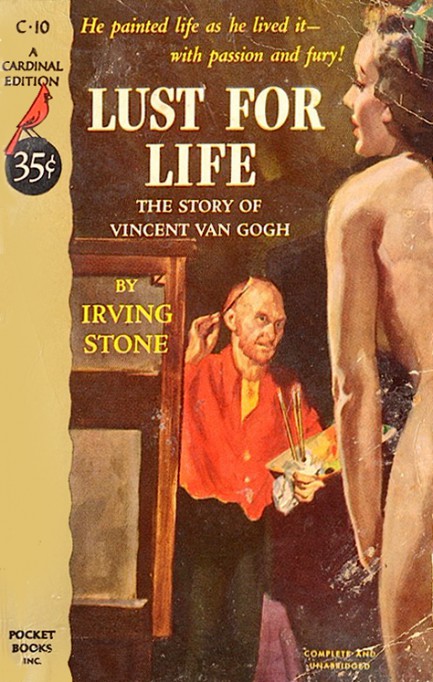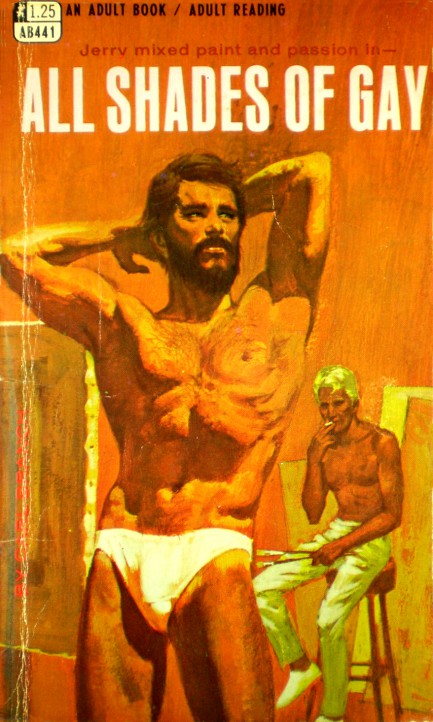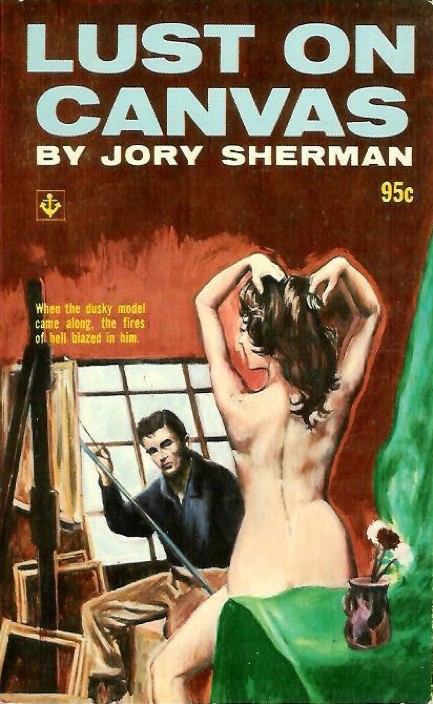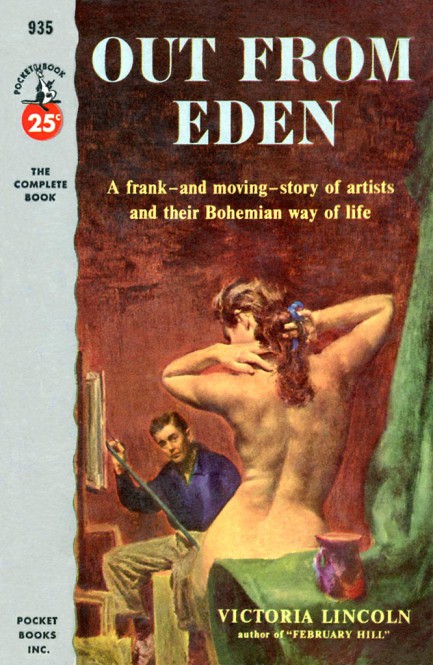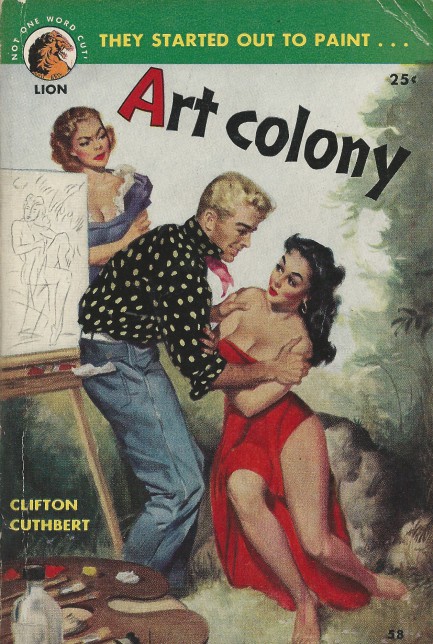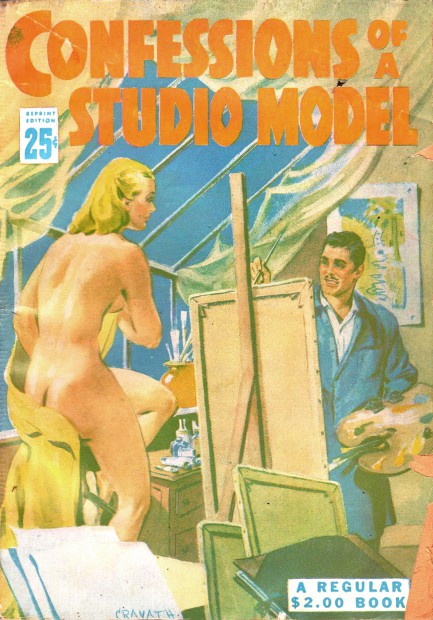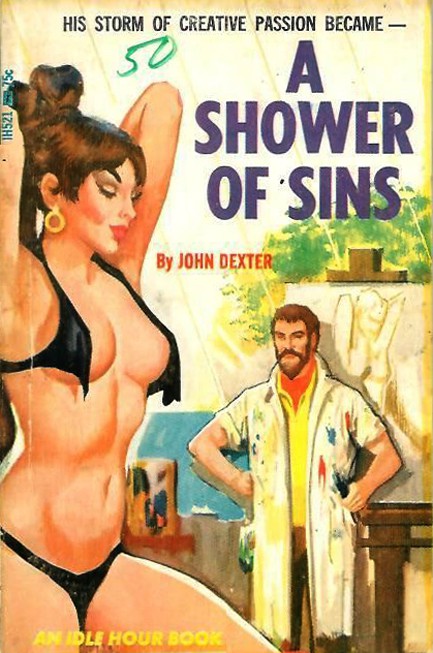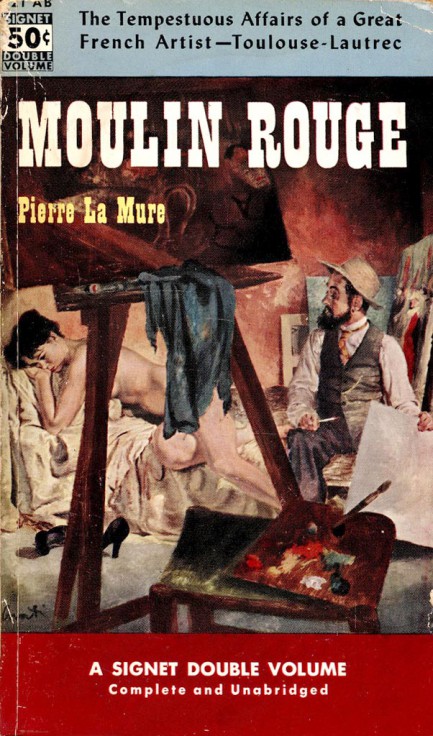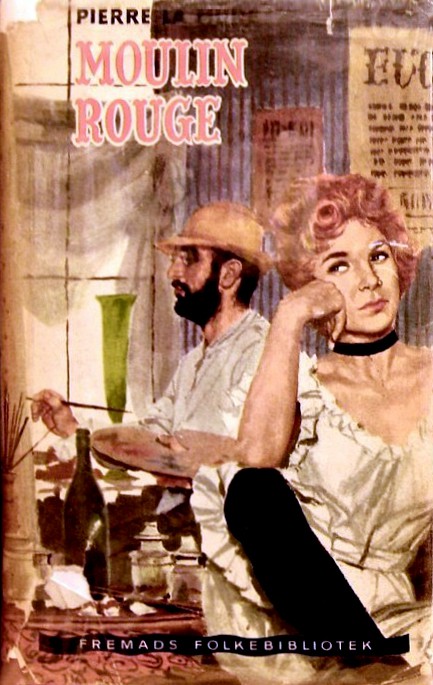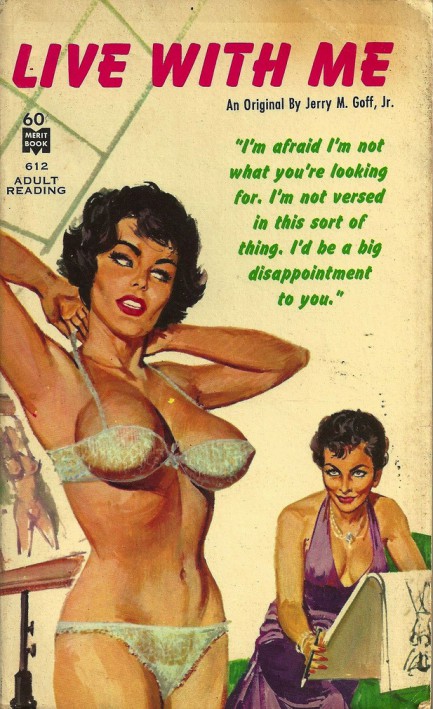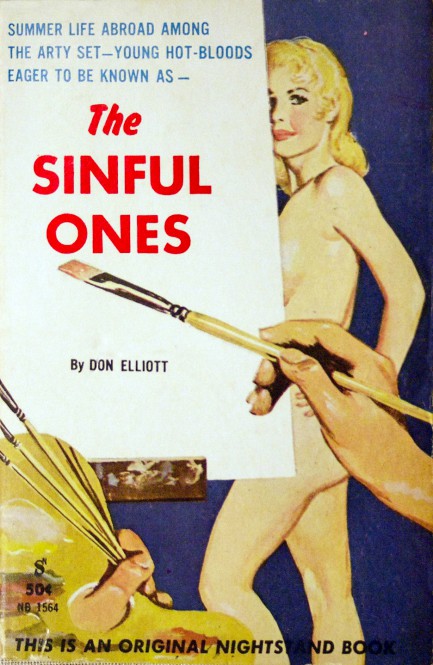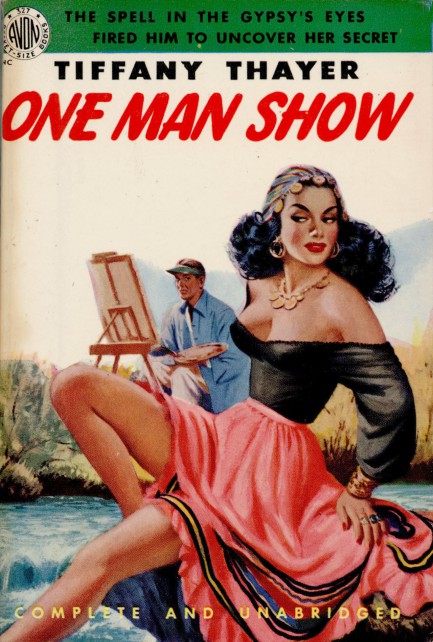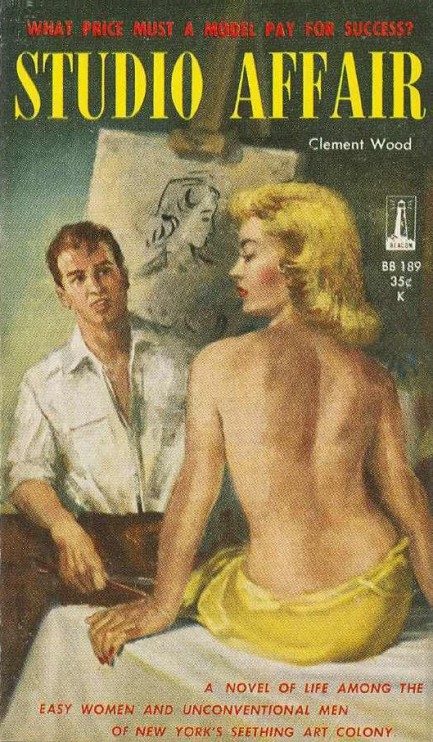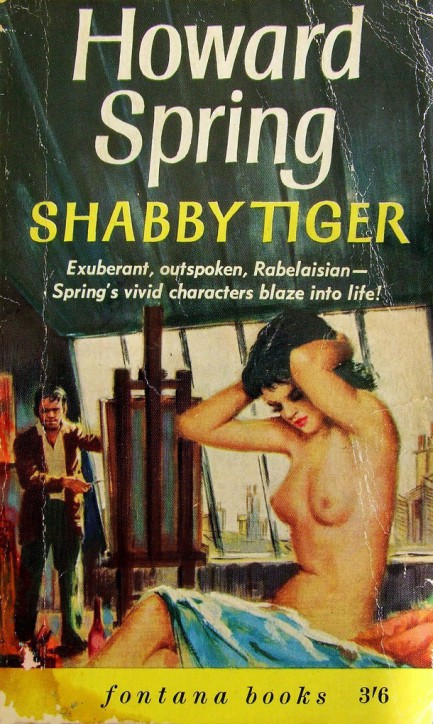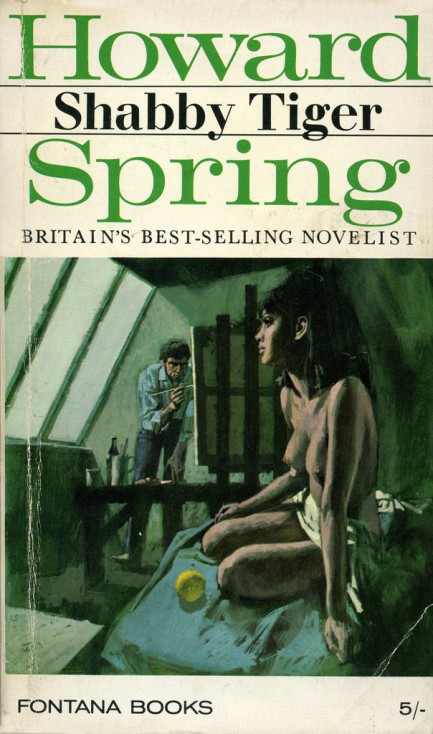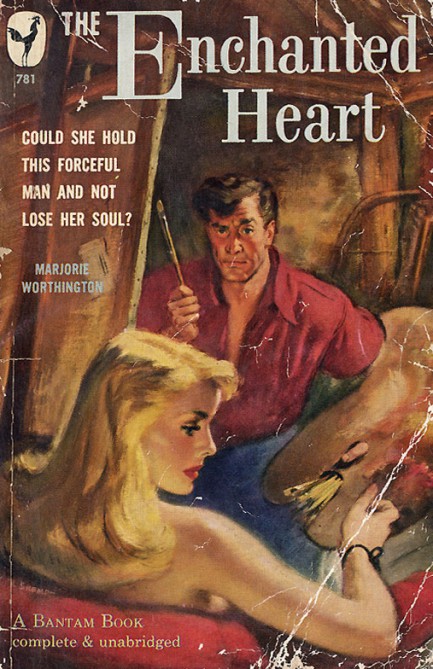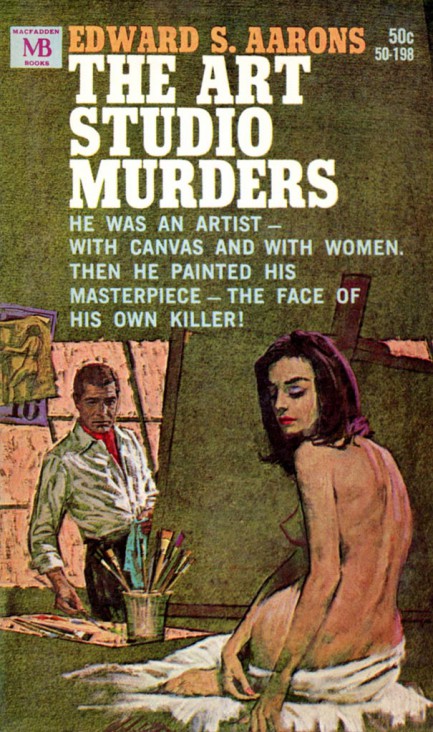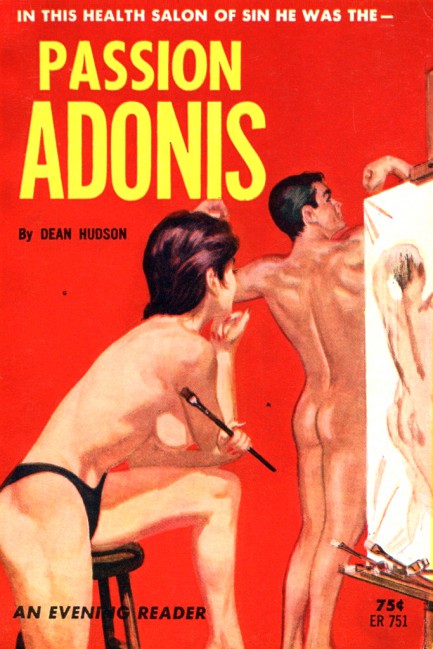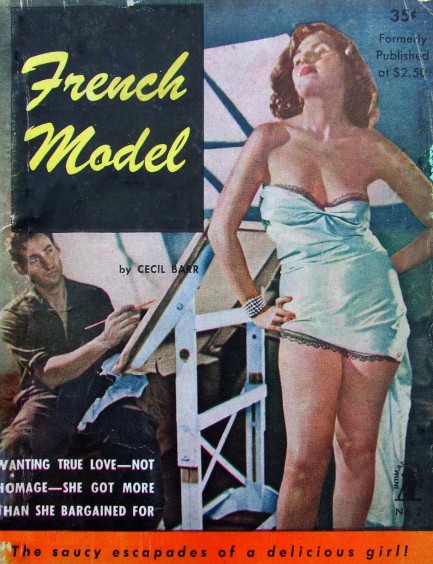 Look at my face. Does this look like the face of someone who thinks you're charming or interesting? 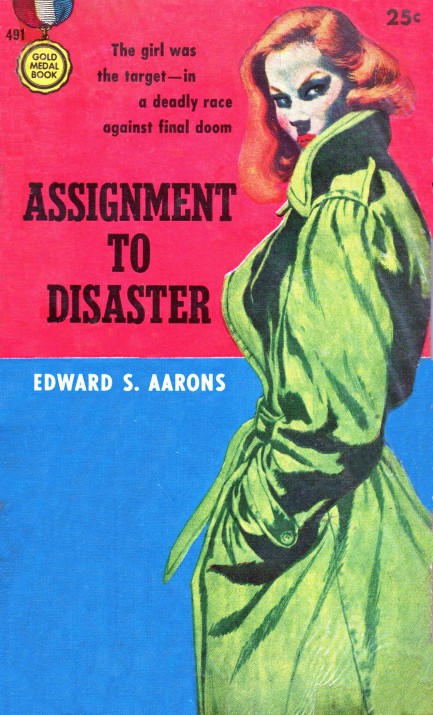
This edition of Assignment to Disaster by Edward S. Aarons has a highly successful piece of cover art. In fact, this beautiful depiction of a red-haired femme fatale rendered in almost comic-book style is the only reason we acquired the novel. It's uncredited, which is criminal, in our view. We immediately checked online for info, but none was forthcoming. Failing to identify the artist, we went ahead and read the story, and what you get here is a U.S. plan to orbit a superweapon, a warhead-packed nuclear missile that orbits the Earth and is always ready to rain fire upon the Soviet Union. The frankly hilarious hope is that having such a strategic advantage will bring peace. Um... just like it did with gunpowder and the machine gun and the H-bomb, right? Right.
Anyway, the weapon, named Cyclops, is set to be orbited, but a plot is uncovered to insert bogus launch equations and cause the missile to crash, probably on a U.S. city. CIA agent Sam Durell is sent to stop the bad guys. Along the way he encounters a beautiful damsel in distress, a more beautiful femme fatale, returns to his childhood home, and gets chased and pummeled a lot. Ultimately, the book is fine, with thankfully little Cold War propaganda, and a focus on sheer action. It was published in 1955 and was the first of a Durell series that ran to an amazing forty-eight entries. That fact alone should tell you that Assignment to Disaster gets the job done. Is it special? No. Is it worthwhile? For sure. We'll move on to the next adventure at some point and report back.
 She's going to have to change her relationship status to “it's complicated.” 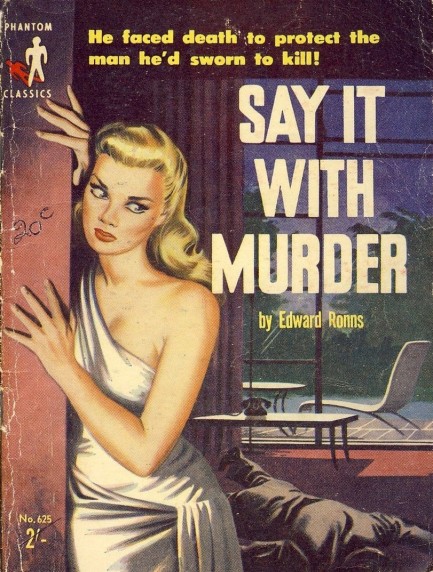 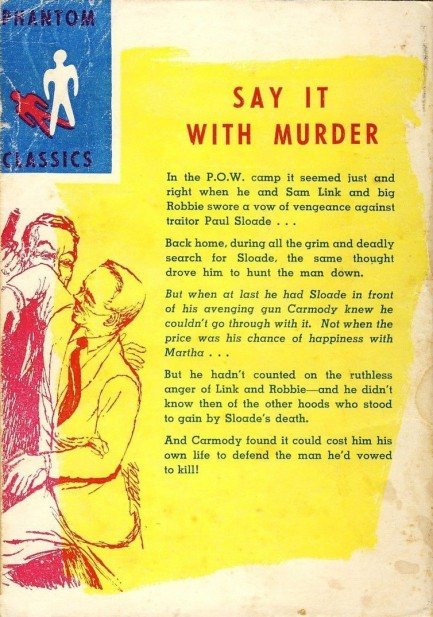
We shared a cover for the thriller Say It with Murder by Edward Ronns, aka Edward S. Aarons, last year, and now we've run across this alternate effort that also looks pretty nice. Both are from Phantom Books out of Australia but this second effort is from Phantom Classics, which suggests that the original run of the novel did quite well. As always with Phantom, the cover is by an uncredited artist.
 Uh, guys? Remember when you said don't worry she always makes it home in one piece? 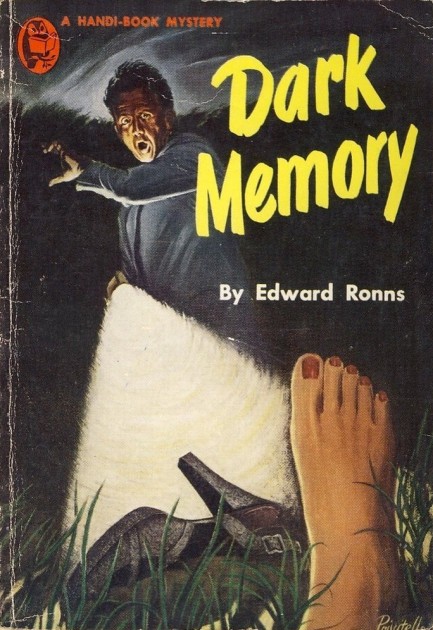
The art on this Handi-Book edition of Edward Ronn's, née Edward S. Aarons' 1950 thriller Dark Memory isn't what you'd call masterfully executed (we've never see a foot that had a straight little toe), but it sure makes you look twice, and that's really the point. It was painted by Mike Privitello. The art on the other editions is interesting too, and we've uploaded those for the sake of comparison.
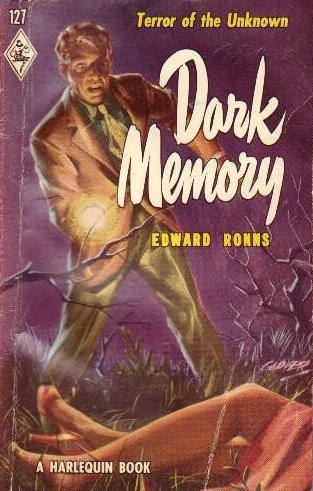 Also published as The Art Studio Murders, the novel opens with a man pushed in front of a subway train. He survives only to endure a blow to his art career when the paintings he's been toiling over for years are destroyed days in advance of a big exhibition. This atrocity is followed by the murder of a friend. At that point he flees to a bucolic island, but quickly learns that whoever is after him is not someone he can shake with a mere change of area code. Also published as The Art Studio Murders, the novel opens with a man pushed in front of a subway train. He survives only to endure a blow to his art career when the paintings he's been toiling over for years are destroyed days in advance of a big exhibition. This atrocity is followed by the murder of a friend. At that point he flees to a bucolic island, but quickly learns that whoever is after him is not someone he can shake with a mere change of area code.
Aarons authored more than 80 novels during a long career spanning the 1930s through 1970s. Six more novels appeared after he died in 1975, but these were built from partial manuscripts and were ghost written by Lawrence Hall. We haven't actually read any Aarons, but considering his output we'll almost certainly run across him in our local used paperback outlet at some point. When we do we'll report back. 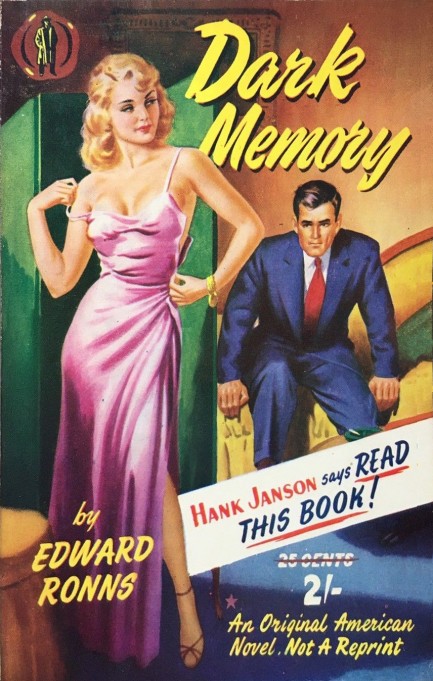
 In the end she didn't think saying it with flowers would get her true feelings across. 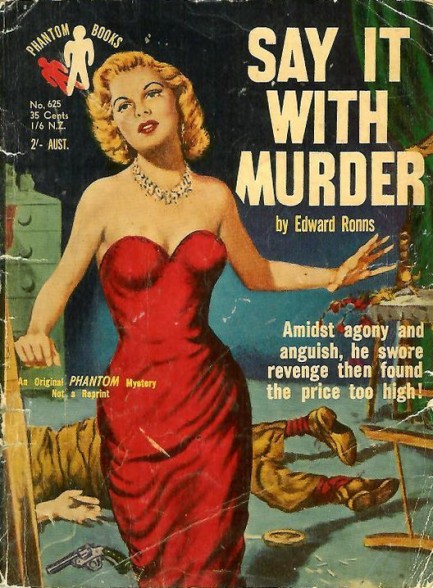
Tired of the rampant commercialism of Valentine's Day? So is the woman on the cover of Edward Ronns' 1955 thriller Say It with Murder. Too bad she doesn't live where we do, where there's no such holiday. This cover is from Australia's Phantom Books, a company we've been featuring often of late, and as we've mentioned, Phantom had a habit of using reconstituted art. You can see exactly what we mean by looking at the front of the 1954 Graphic Books edition, with its excellent work from Lou Marchetti. We still don't know exactly why Phantom changed its covers. A rights usage issue, we suppose. But if that's the case, why was the company able to get away with making near copies of the originals? We'll keep exploring this question until an answer presents itself.
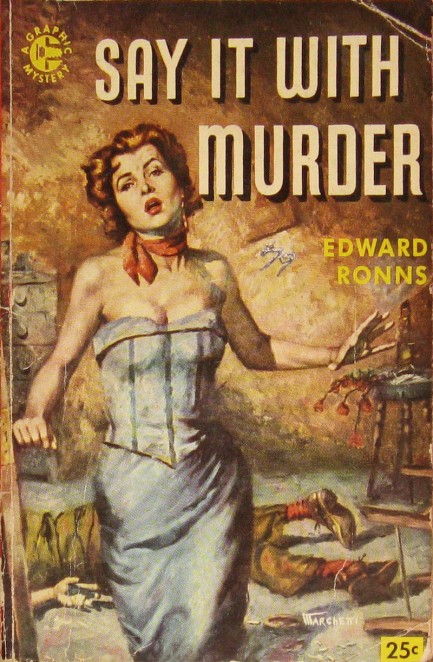
 Vintage literature reminds us that murder, deceit, betrayal, lust and greed know no boundaries. 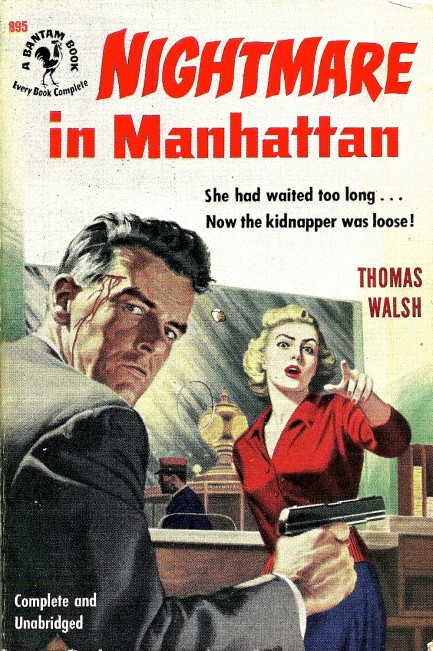
There’s a saying that the world is a book and those who don’t travel read only one page. But on the other hand, if you stay home the danger and mayhem at least happen in your own language. Which is the better course? Pulp authors seem to think it’s the latter. Above and below are twenty-one vintage bookcovers for fiction set in various cities around the globe. The writing spans genres such as romance, sleaze, horror, and espionage, and the art is by Mitchell Hooks, Barye Phillips, Robert McGinnis, et. al. Thanks to all the original uploaders.
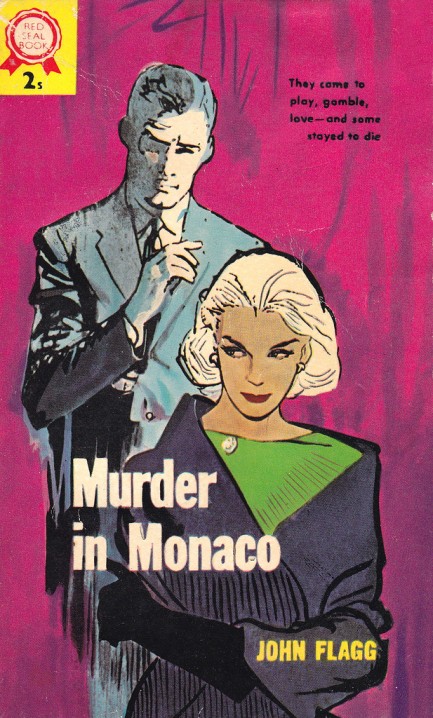 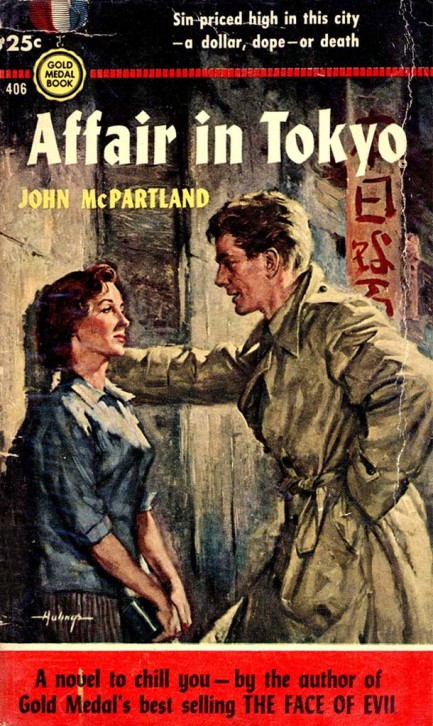 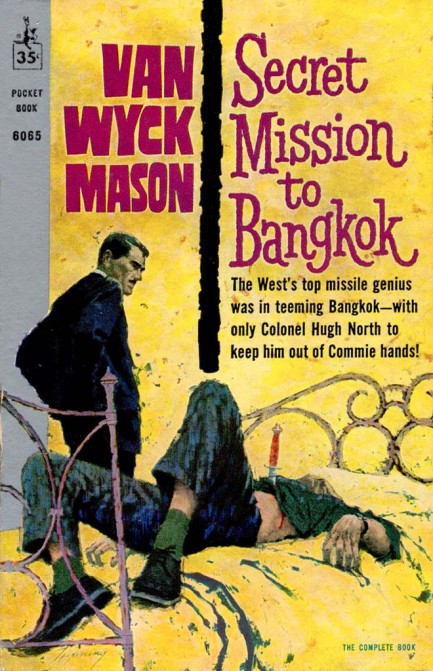 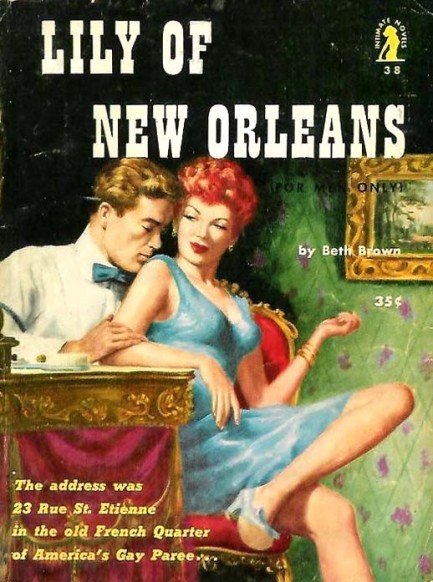 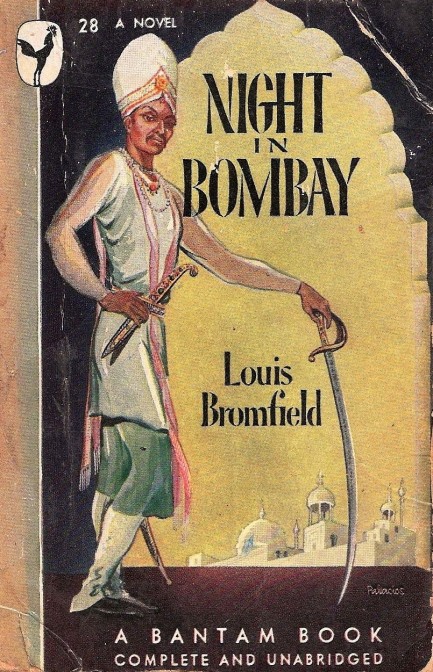 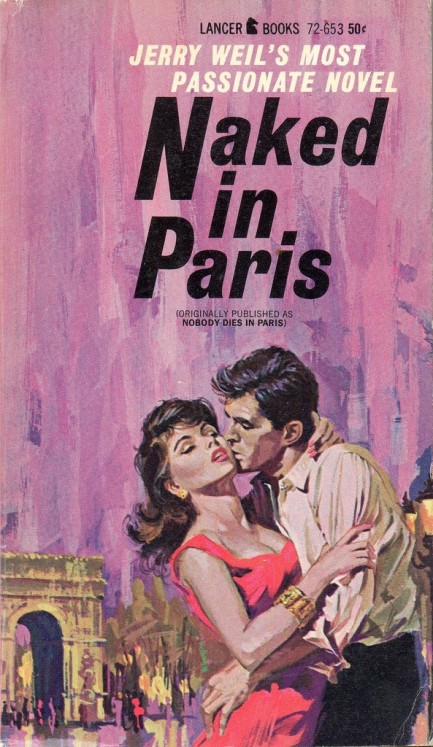 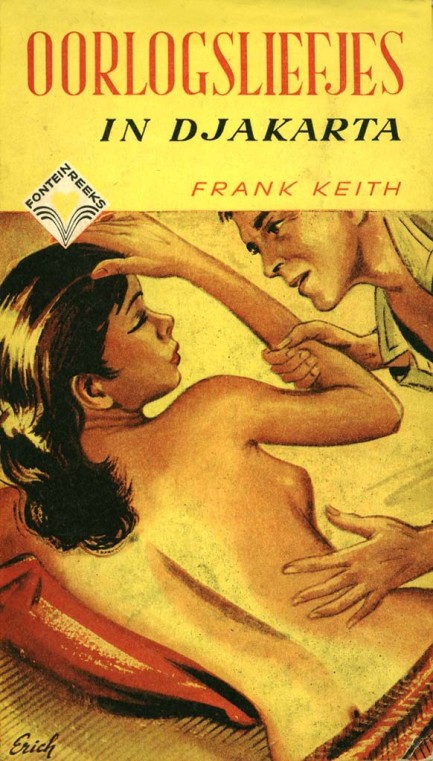 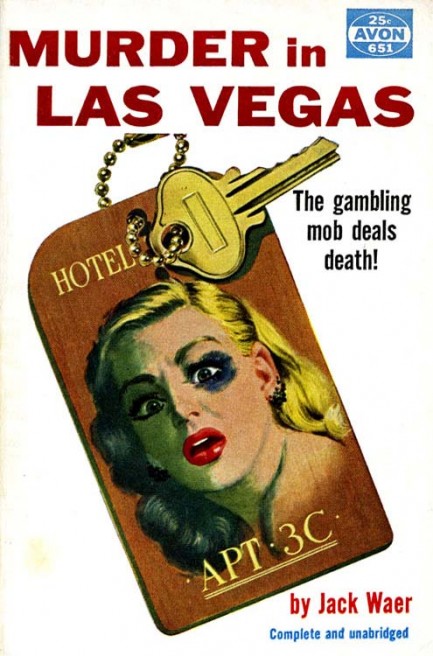 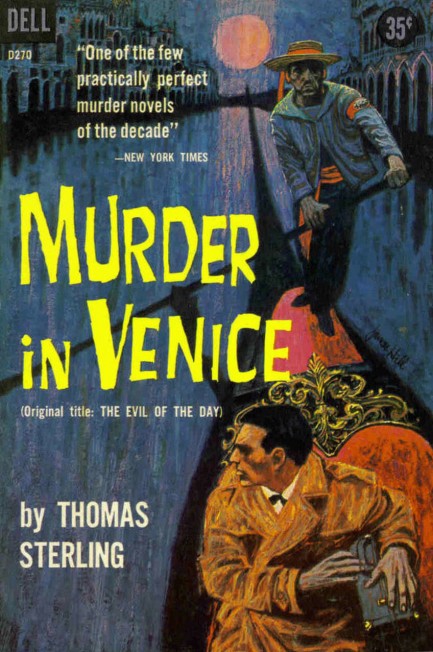 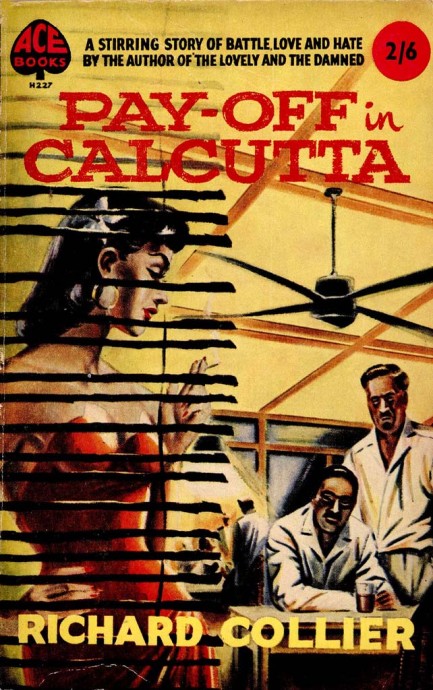 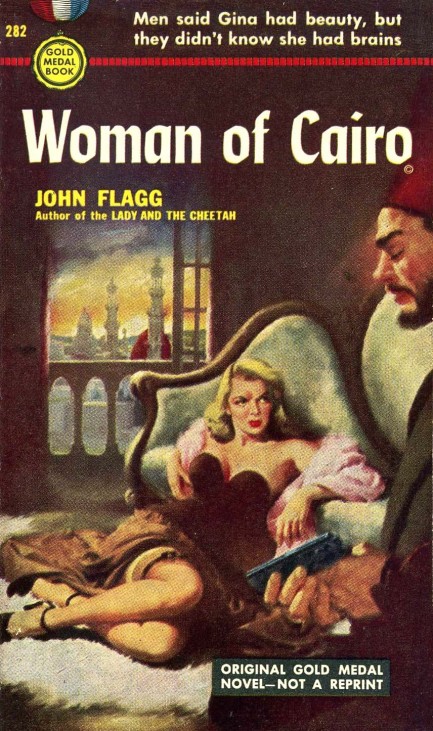 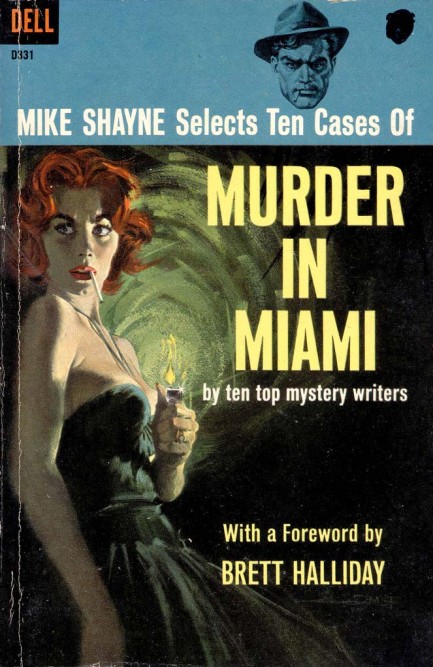 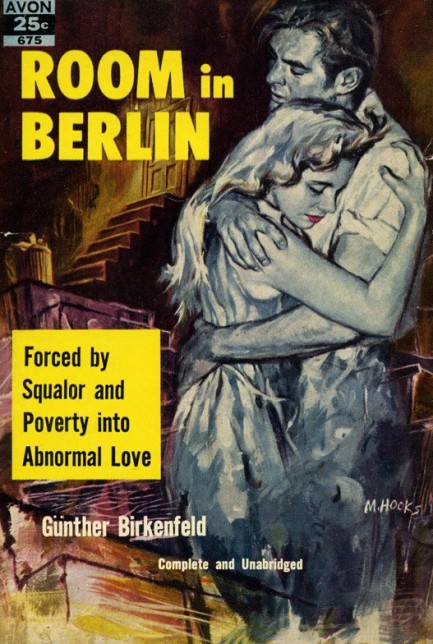 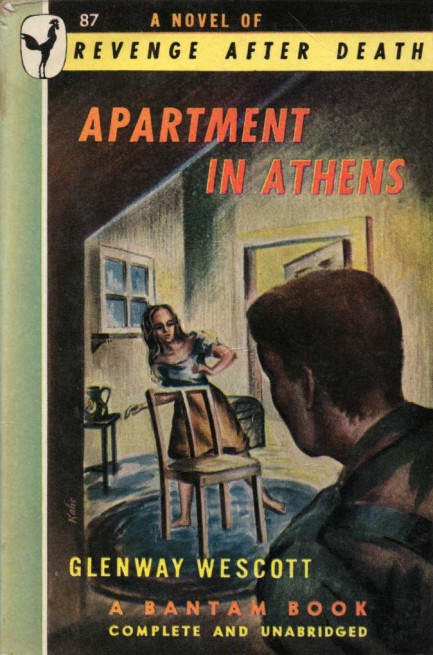 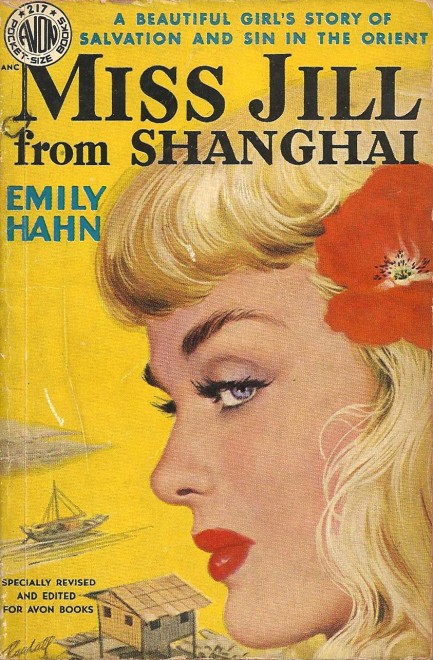 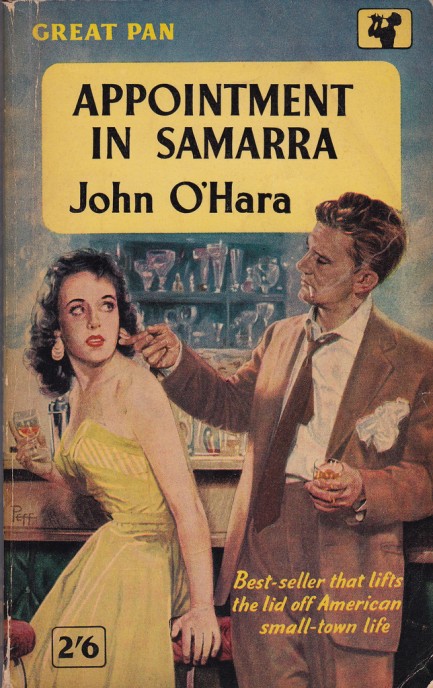 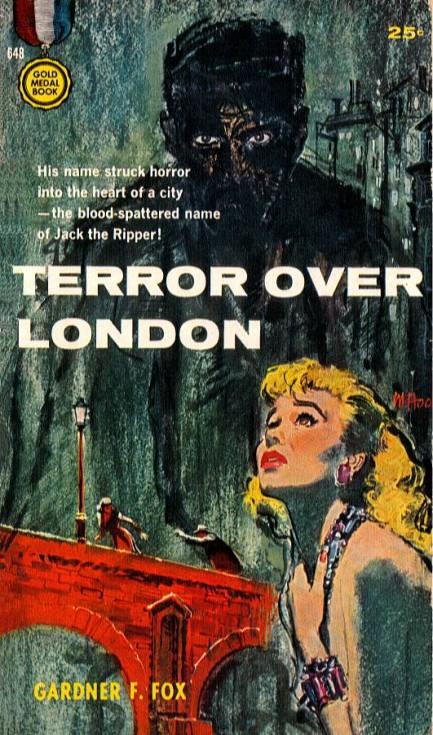 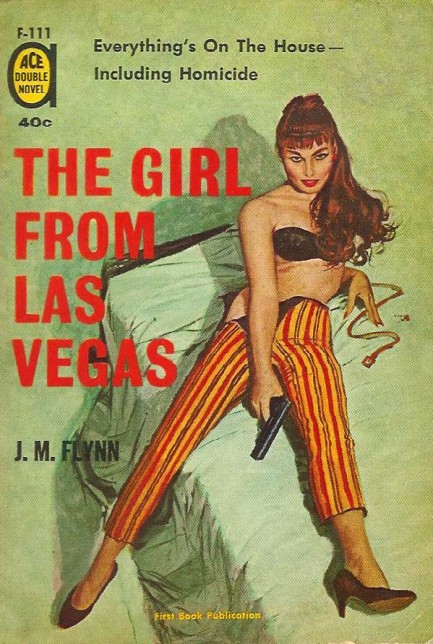 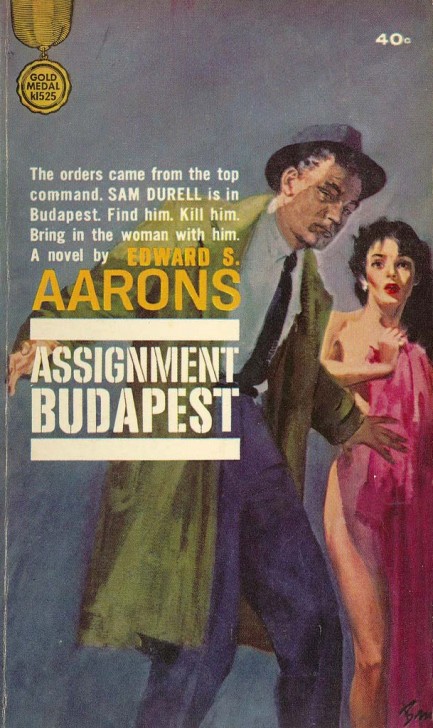 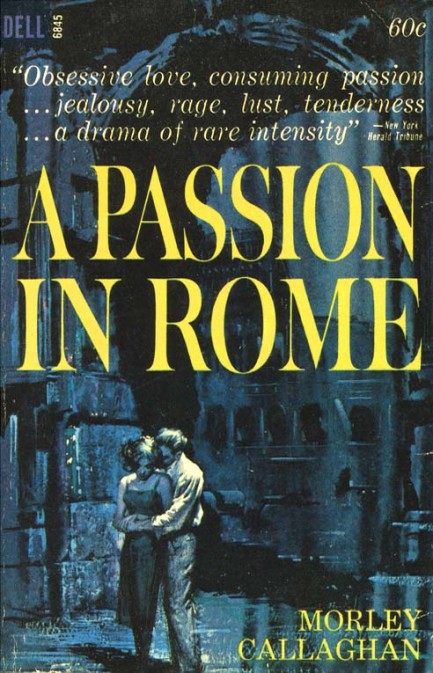
|
 |

The headlines that mattered yesteryear.
2003—Hope Dies
Film legend Bob Hope dies of pneumonia two months after celebrating his 100th birthday. 1945—Churchill Given the Sack
In spite of admiring Winston Churchill as a great wartime leader, Britons elect
Clement Attlee the nation's new prime minister in a sweeping victory for the Labour Party over the Conservatives. 1952—Evita Peron Dies
Eva Duarte de Peron, aka Evita, wife of the president of the Argentine Republic, dies from cancer at age 33. Evita had brought the working classes into a position of political power never witnessed before, but was hated by the nation's powerful military class. She is lain to rest in Milan, Italy in a secret grave under a nun's name, but is eventually returned to Argentina for reburial beside her husband in 1974. 1943—Mussolini Calls It Quits
Italian dictator Benito Mussolini steps down as head of the armed forces and the government. It soon becomes clear that Il Duce did not relinquish power voluntarily, but was forced to resign after former Fascist colleagues turned against him. He is later installed by Germany as leader of the Italian Social Republic in the north of the country, but is killed by partisans in 1945.
|

|
|

It's easy. We have an uploader that makes it a snap. Use it to submit your art, text, header, and subhead. Your post can be funny, serious, or anything in between, as long as it's vintage pulp. You'll get a byline and experience the fleeting pride of free authorship. We'll edit your post for typos, but the rest is up to you. Click here to give us your best shot.

|
|







 Also published as The Art Studio Murders, the novel opens with a man pushed in front of a subway train. He survives only to endure a blow to his art career when the paintings he's been toiling over for years are destroyed days in advance of a big exhibition. This atrocity is followed by the murder of a friend. At that point he flees to a bucolic island, but quickly learns that whoever is after him is not someone he can shake with a mere change of area code.
Also published as The Art Studio Murders, the novel opens with a man pushed in front of a subway train. He survives only to endure a blow to his art career when the paintings he's been toiling over for years are destroyed days in advance of a big exhibition. This atrocity is followed by the murder of a friend. At that point he flees to a bucolic island, but quickly learns that whoever is after him is not someone he can shake with a mere change of area code.




